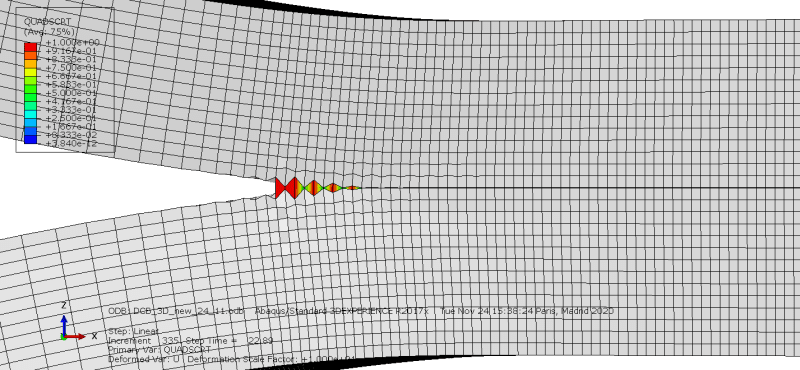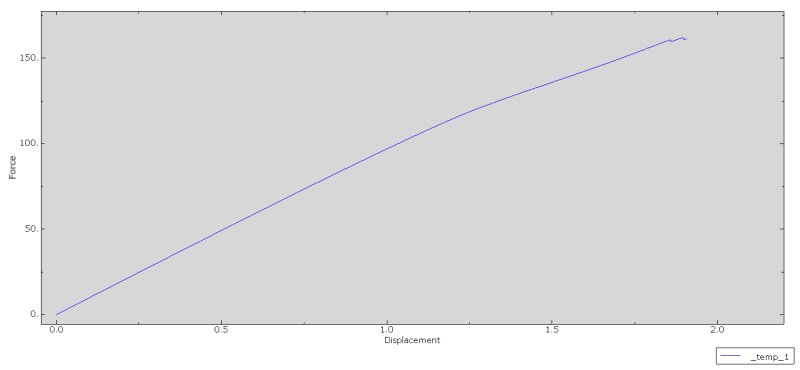Mathilde
Student
- Nov 25, 2020
- 1
Hi,
I did a mode I fracture simulation on a customized DCB speciment folloxing the ASTM D5528. The specimen is 200 mm long, 25 mm wide and with 28 plies of Glass/epoxy UD fabric. The stacking sequence is Quasi Trival FUMD, so the upper arm and the lower arm of the specimen have the same global charateristic but the sequence is not symmetric.
Attached there are the results after 344 step and the python script for my model. I do not understand why I have negative eigenvalues.
I simulate the same model with 0//0 interface and a stacking sequence of [0]_24 ply of carbon epoxy without facing that problem.
Thank you


I did a mode I fracture simulation on a customized DCB speciment folloxing the ASTM D5528. The specimen is 200 mm long, 25 mm wide and with 28 plies of Glass/epoxy UD fabric. The stacking sequence is Quasi Trival FUMD, so the upper arm and the lower arm of the specimen have the same global charateristic but the sequence is not symmetric.
Attached there are the results after 344 step and the python script for my model. I do not understand why I have negative eigenvalues.
I simulate the same model with 0//0 interface and a stacking sequence of [0]_24 ply of carbon epoxy without facing that problem.
Thank you


